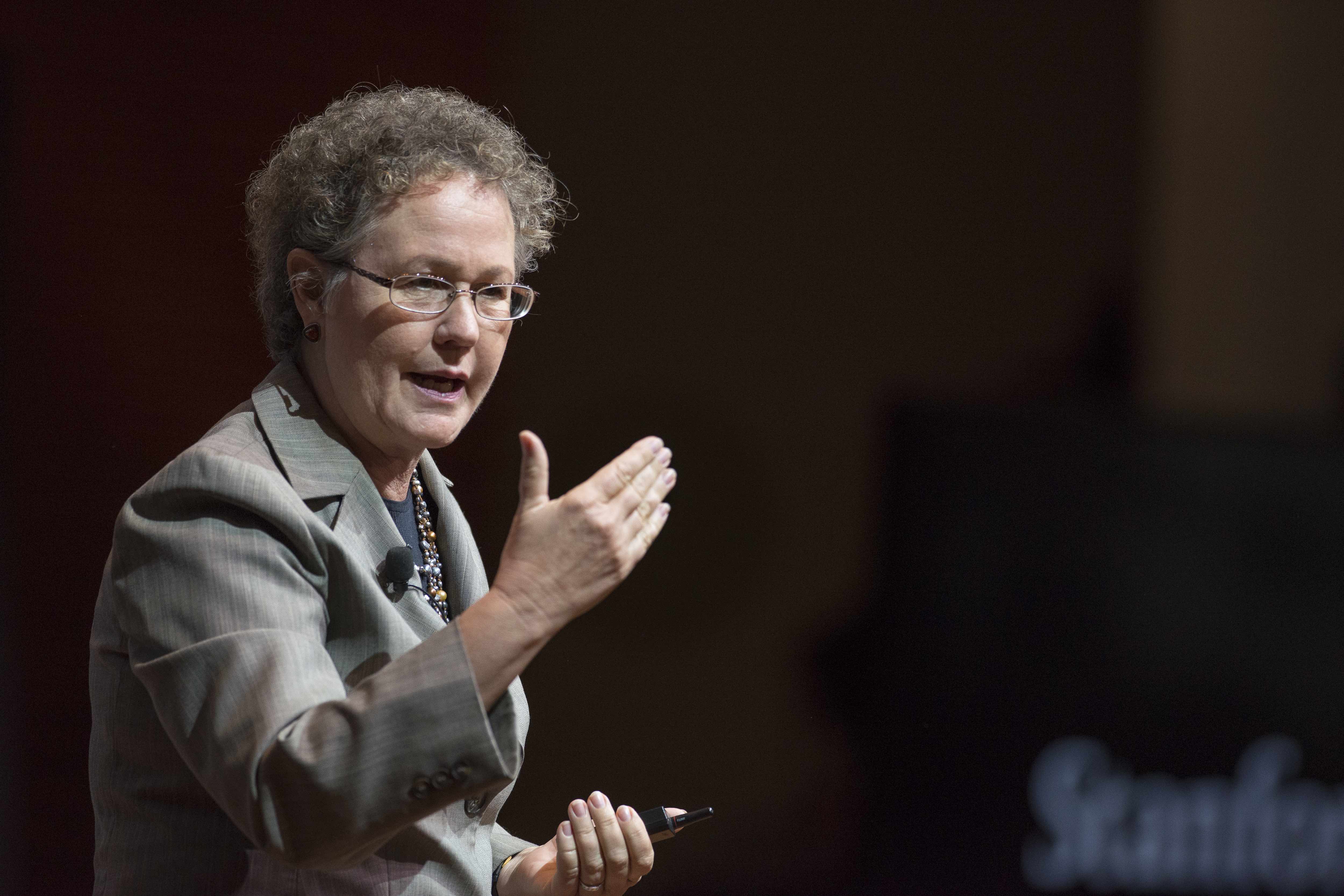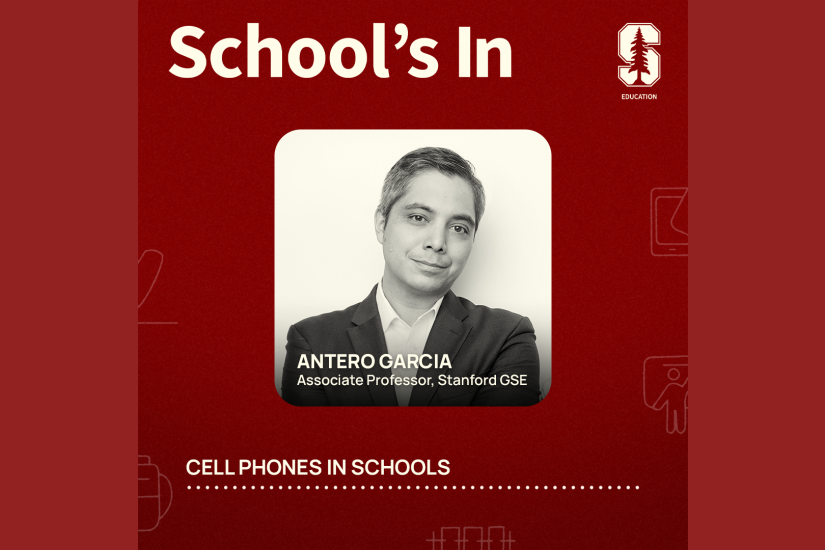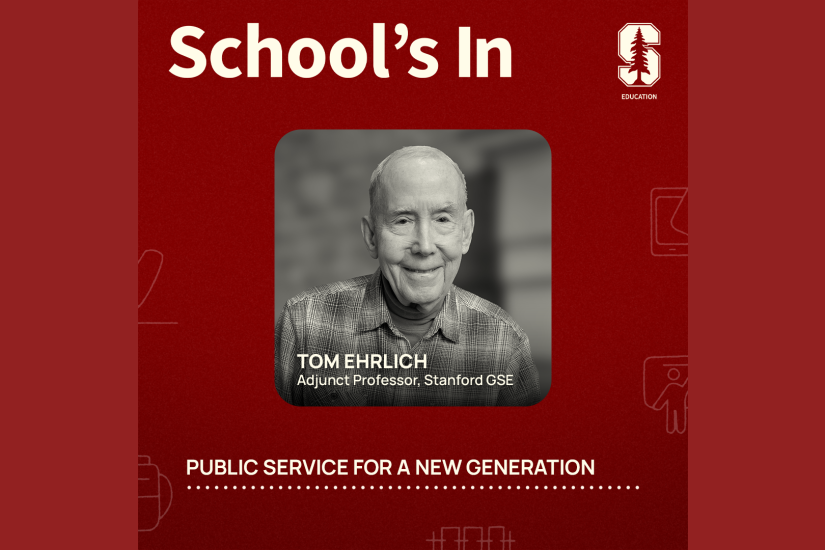
“If you don’t have a strong supply of well-prepared teachers, nothing else in education can work”
Linda Darling-Hammond, professor emerita at Stanford Graduate School of Education, has spent decades studying teacher education programs and practices and is widely considered one of the most important voices in the field. She founded the Stanford Center for Opportunity Policy in Education and led former President Barack Obama’s education policy transition team in 2008.
Now president and CEO of the Learning Policy Institute (LPI), she was recently appointed president of the California State Board of Education, which oversees academic standards, curriculum, assessments and accountability for K-12 schools throughout the state.
In a new book, Preparing Teachers for Deeper Learning, she and UCLA Professor Jeannie Oakes, with LPI colleagues, profile seven groundbreaking teacher education programs in the United States, detailing the practices that set them apart.
We spoke with her about what 21st-century teacher preparation looks like.
You write that teachers entering the field today need to be prepared for “deeper learning.” What do you mean by that?
There’s a lot of conversation right now about how the knowledge and skills young people need to survive and succeed are changing. Students need to be able to find knowledge, put it together in new ways, think critically, problem-solve and collaborate with others. Deeper learning reflects the capacity to use these skills, which are essential for 21st-century societies and economies.
Knowledge is expanding very rapidly. A few years ago researchers at UC Berkeley found there was more new knowledge created between 1999 and 2003 than in the entire history of the world preceding that. It’s impossible for schools now to say, ‘Here are the facts you need to know.’ Two-thirds of today’s young people will work in careers that don’t even exist yet, using technologies that haven’t been invented yet, to solve massive problems that our generation has not managed to solve.
What would you say to teachers who want to teach this way but find themselves working in a school where it’s not encouraged? What can they do?

This is a perennial problem in teacher preparation, and in every profession: Do you prepare teachers for schools as they are, or do you prepare them for schools as they need to become?
There are a lot of pressures on schools to rethink the way they’re teaching and learning. Most states have adopted new student learning standards that are more focused on higher-order thinking skills, and there is a related move to change assessments—the College Board is even changing some of its Advanced Placement courses and exams to be much more focused on project-based learning. For most teachers, we’re in a moment where it’s much more likely that this is what their school is trying to do, even if they’re not successful yet.
We need to prepare teachers to be change agents if they go into a school that has not yet begun to move in this direction. We also need to help them learn to collaborate and problem-solve with each other, so when they go into their new school, they’re able to find like-minded teachers to work with—not only on classroom practice but also on school practice.
You began your career as a public school teacher in the 1970s. What are some of the changes you’ve seen over the years in the kind of preparation teachers undergo?
There were probably some very good programs when I came into teaching, but I didn’t experience any of them. I came in during a time of teacher shortage, through an alternate pathway—I took a couple of classes and did some summer school teaching and then I was on my own. I had very little support, very little guidance.
There was then, and still is now, a too-common belief that if you just had a good undergraduate education, you could go and teach. But there’s so much more to learn. I quickly became aware of how much there is to learn to effectively teach diverse students, and I’ve spent a lot of my career trying to help organize that knowledge base in a way that teachers can get access to it.
What made the programs in the book stand out?
Today there are many more programs that educate teachers well—where you’re learning from a master teacher who’s an excellent example of what you’re trying to learn, where the coursework is wrapped around clinical experience in a productive way, where you’re learning to plan curriculum that meets the kids’ needs and the demands of the standards, where you’re learning how to create a classroom community and how to teach students with a wide range of needs.
Teachers who’ve gone through the programs we study in the book will tell you they felt very well prepared, and they end up moving very quickly into leadership roles and into careers that make a big difference in the profession.
What can we do to make teacher preparation programs more accessible?
For one thing, we need to underwrite the cost of teacher education. If you were to become a teacher in Finland, Singapore or a number of other high-achieving countries, your education would be completely free, and you would earn a salary or a stipend while you’re training to teach. Everybody gets access to a high-quality program, and everybody can afford to do it because they’re not trying to figure out how to go without a salary for a period of time and go into significant debt.
The student debt crisis in the Unites States is a particular crisis for people becoming teachers because these salaries are about 30 percent lower than those of other college graduates. This shapes the careers people choose, because many are afraid to go into debt and know that they won’t have the resources to pay that debt back. In this country, we need to pay for teachers’ education. That should be true for everyone in the field, but at minimum it should be true for people who go into shortage fields and high-need locations.
We also need to strengthen the accreditation and licensing process for teacher education programs, to make sure everybody knows about best practices and will be expected to incorporate them into their work. And we need to invest in innovation in teacher education, as we do in medicine, with grants from federal and state governments to learn and then share what we discover about best practices for preparing teachers.
We have all kinds of educational reforms underway in the United States—curriculum reforms, governance reforms and so on—but at the end of the day, if you don’t have a strong supply of well-prepared teachers, nothing else in education can work.
“There was then, and still is now, a too-common belief that if you just had a good undergraduate education, you could go and teach. But there’s so much more to learn.”
Linda Darling-Hammond, Professor Emerita, Stanford Graduate School of Education
It’s been about five months since Gov. Gavin Newsom appointed you as president of the California State Board of Education. What kind of changes do you hope to see?
California is in the middle of an educational renaissance, and that’s one of the reasons I agreed to take on this challenge. My predecessor [Mike Kirst, also professor emeritus at Stanford GSE] and Gov. Jerry Brown did some phenomenal things for the state: They turned around a fiscal crisis, put in place a more equitable funding system, adopted new standards and assessments, created a new accountability system and have pointed the state in a very positive direction.
But we have a long way to go to take advantage of those changes. Countries and states that have really made strong gains in education have had 15 to 20 years of continuous work on an agenda for improvement. I appreciate what has been accomplished in California, and I also see what we need to do to build on those things—including developing a system of support for teachers and school leaders as they come into the profession, and ongoing support for their learning about the new practices that public education requires in this century.
I’m pleased that Gov. Newsom put almost $90 million on the table for forgivable loans and service scholarships to underwrite preparation for teachers who come in and teach in high-need locations and fields. He allocated another $35 million for professional development for teachers and leaders, so that we can start putting together professional learning resources that will create a system of support.
My goal would be that any teacher in the state of California who wants to get better at an aspect of their practice will be able to find high-quality professional learning opportunities, including intensive institutes and coaching—whether that’s to help them develop stronger content teaching skills, skills for supporting social-emotional learning, skills for teaching English learners or skills for teaching students with learning differences. Teachers and school leaders should never again have to go looking under rocks to find nuggets of knowledge. They should be supported in their learning so that they can be effective with children.
Last year Linda Darling-Hammond joined GSE Dean Dan Schwartz and Senior Lecturer Denise Pope in the studio for a conversation about transforming education on “School’s In,” a half-hour radio show that airs weekly on SiriusXM Insight Channel 121. Listen from the link below and find other past episodes of the show on our website.
Faculty mentioned in this article: Linda Darling-Hammond



